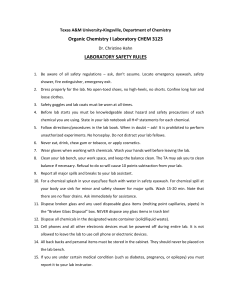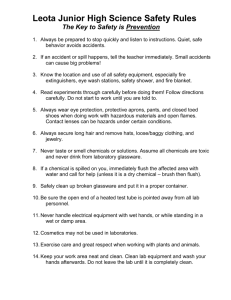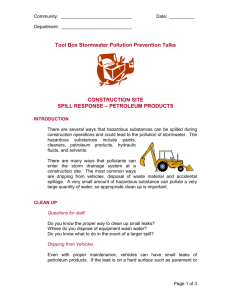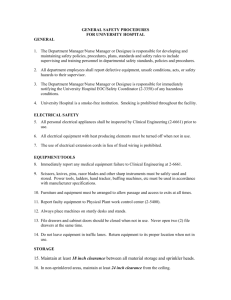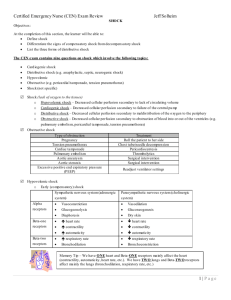IHS Science Safety Procedures
advertisement
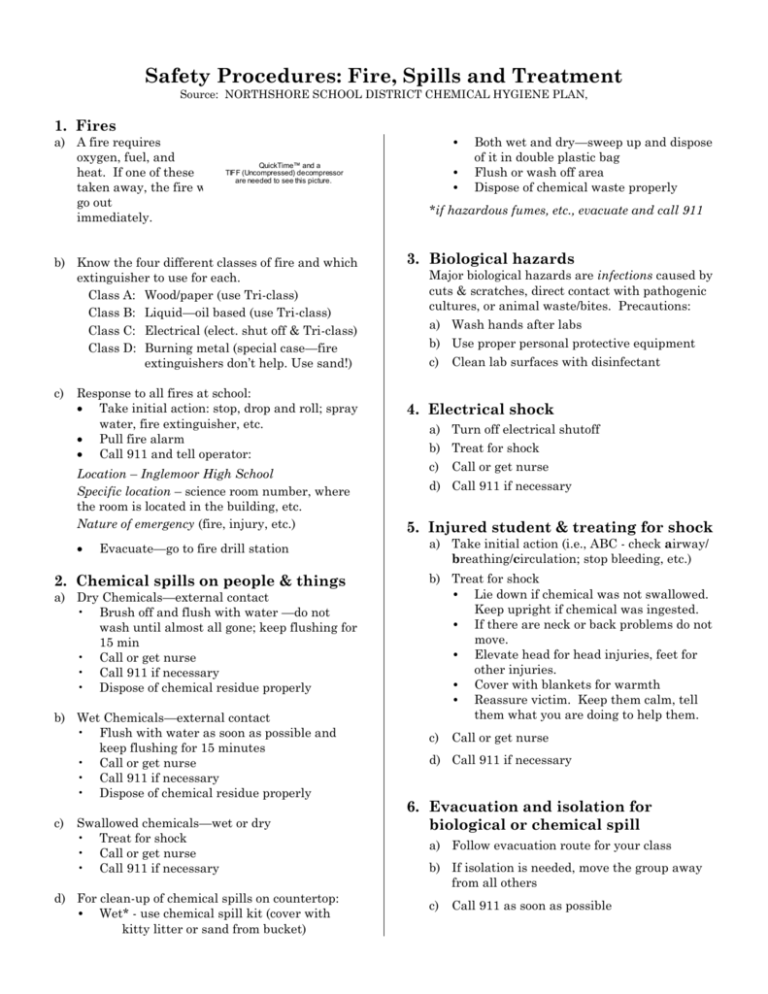
Safety Procedures: Fire, Spills and Treatment Source: NORTHSHORE SCHOOL DISTRICT CHEMICAL HYGIENE PLAN, 1. Fires a) A fire requires oxygen, fuel, and heat. If one of these taken away, the fire will go out immediately. • QuickTime™ and a TIFF (Uncompressed) decompressor are needed to see this picture. is b) Know the four different classes of fire and which extinguisher to use for each. Class A: Wood/paper (use Tri-class) Class B: Liquid—oil based (use Tri-class) Class C: Electrical (elect. shut off & Tri-class) Class D: Burning metal (special case—fire extinguishers don’t help. Use sand!) c) Response to all fires at school: Take initial action: stop, drop and roll; spray water, fire extinguisher, etc. Pull fire alarm Call 911 and tell operator: Location – Inglemoor High School Specific location – science room number, where the room is located in the building, etc. Nature of emergency (fire, injury, etc.) Evacuate—go to fire drill station 2. Chemical spills on people & things a) Dry Chemicals—external contact • Brush off and flush with water —do not wash until almost all gone; keep flushing for 15 min • Call or get nurse • Call 911 if necessary • Dispose of chemical residue properly b) Wet Chemicals—external contact • Flush with water as soon as possible and keep flushing for 15 minutes • Call or get nurse • Call 911 if necessary • Dispose of chemical residue properly c) Swallowed chemicals—wet or dry • Treat for shock • Call or get nurse • Call 911 if necessary d) For clean-up of chemical spills on countertop: • Wet* - use chemical spill kit (cover with kitty litter or sand from bucket) • • Both wet and dry—sweep up and dispose of it in double plastic bag Flush or wash off area Dispose of chemical waste properly *if hazardous fumes, etc., evacuate and call 911 3. Biological hazards Major biological hazards are infections caused by cuts & scratches, direct contact with pathogenic cultures, or animal waste/bites. Precautions: a) Wash hands after labs b) Use proper personal protective equipment c) Clean lab surfaces with disinfectant 4. Electrical shock a) Turn off electrical shutoff b) Treat for shock c) Call or get nurse d) Call 911 if necessary 5. Injured student & treating for shock a) Take initial action (i.e., ABC - check airway/ breathing/circulation; stop bleeding, etc.) b) Treat for shock • Lie down if chemical was not swallowed. Keep upright if chemical was ingested. • If there are neck or back problems do not move. • Elevate head for head injuries, feet for other injuries. • Cover with blankets for warmth • Reassure victim. Keep them calm, tell them what you are doing to help them. c) Call or get nurse d) Call 911 if necessary 6. Evacuation and isolation for biological or chemical spill a) Follow evacuation route for your class b) If isolation is needed, move the group away from all others c) Call 911 as soon as possible

